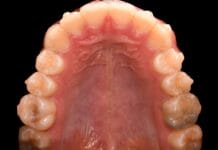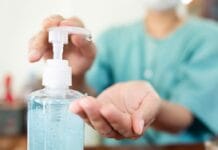Dear CVS,
As a dental professional, I am writing with serious concerns associated with your recent partnership with a do-it-yourself orthodontic company. Upon looking into this company, I discovered they are quick to threaten or pursue litigation against anyone that questions their ethics, safety of patients, or quality of work they provide. For this reason, in an attempt to avoid threats of litigation or other such scare tactics, I will be referring to this company as Shameless Dental Con-artists (SDC) instead of their actual name. I’m sure you can understand.
My concern lies in the fact that this company treats patients at home with clear aligners without any proof of oral health. When I contacted them to inquire about how the process would work, I was told there would be no licensed dental professional on the premises. I was also told that there would be no radiographs necessary prior to treatment. The only requirement prior to treatment was a 3-D scan, not to be confused with a 3-D radiograph. They state they will send this 3-D scan to their licensed dentist/orthodontist, and if they need further information, they will then, with the patient’s permission, request dental records and X-rays from the patient’s dentist.
Here is the problem with that, to my knowledge a patient’s periodontal status cannot be determined with a 3-D scan, nor can a definitive diagnosis of dental decay be made with a 3-D scan. Do you know one of the symptoms of moderate to advanced periodontal disease? That is a rhetorical question, of course, you don’t know, you’re a drug store. The answer is shifting/drifting teeth often resulting in spaces between teeth.
The CDC estimates around 50% of the adult population have some degree of periodontal disease. With that information, I hope you can understand my concern. Treating a patient with clear aligners who also has active periodontal disease could lead to tooth loss. I’m not saying that it will 100% of the time, but there is a substantial risk. Furthermore, periodontal disease has a bidirectional relationship with a number of life-threatening diseases. Considering your tagline is “Health is Everything,” I would hope this would be of concern to you.
In addition, I’m not the only dental professional that has concerns about do-it-yourself orthodontic treatment. SDC has filed suit against the Michigan Dental Association, Alabama Board of Dentistry, New Jersey Dental Association, and Georgia Board of Dentistry claiming defamation, false and deceptively misleading statements based on these organizations’ complaints and concerns for patient safety, treatment and treatment outcomes. They have also sent many cease and desist letters to multiple dental professionals that have criticized the company and voiced concerns for patients. Many of the lawsuits filed by this company have been thrown out. The American Association of Orthodontists has filed complaints regarding companies providing clear aligners through the mail in 36 states.
The American Dental Association “strongly discourages” do-it-yourself orthodontics. After conducting a survey, the American Association of Orthodontics (AAO) reported that “nearly 13% of its members are seeing patients that have tried do-it-yourself teeth straightening, with some of those attempts causing irreparable damage.” In response to these results, the AAO issued a “consumer alert,” it states, “The American Association of Orthodontics is urging consumers to beware of Internet videos and websites which encourage people to try and straighten their own teeth. Moving teeth is a medical procedure and needs personal supervision by an orthodontist. Please be wary of any suggestions to move teeth with rubber bands, dental floss or other objects ordered on the Internet. Moving teeth without a thorough examination of the overall health of the teeth and gums could result in the permanent loss of teeth, which may result in expensive and lifelong dental problems. Orthodontists receive two to three years of specialized education beyond dental school and are specialists in straightening teeth and aligning the bite.”
I have been asked by multiple concerned colleagues about how this process is legal. Honestly, I didn’t understand it myself. I investigated the legality of treating patients without physically seeing a patient; it turns out SDC is conducting this under the guise of teledentistry. Teledentistry is primarily used for consultation, treatment planning, and referral to the appropriate licensed dental professional to achieve optimal dental health. Teledentistry has the potential to improve access to care for the underserved population. What disappoints me the most is that this company can help improve oral health and overall health by simply using teledentistry in the manner it was intended. Or an even better option would be to have a licensed dental professional on site to screen for possible dental disease. This would not only improve the patient’s health, but it could also improve treatment outcomes. It would be a win-win situation.
I’m sure the choice to associate yourself with this company is driven by financial gains. Considering SDC’s worth is 3.2 billion, I’m not sure they understand the concept of “patients over profits.” I get it; all companies want to improve revenue. I’m fine with that, but no company should lower their standards to acquire more wealth.
I would like to encourage you to contact the ADA or the AAO and discuss this decision. I’m sure there is a contract involved which might make getting out of this arrangement quite difficult, however, seeing your company try to dissolve this partnership may improve your standing with the dental industry. There are almost 200,000 dentists, more than 200,000 registered dental hygienists, and 13,500 orthodontists in the US, that does not include dental assistants, lab techs, and office managers. The dental industry is not minuscule, as a drug store, I wouldn’t think you would not want to cause strife between your company and most dental professionals.
I hope you will consider all this information and re-evaluate your partnership. Otherwise, you may want to change your tagline to “Money is Everything.” On behalf of 99% of licensed dental professionals, I urge you to reconsider this partnership.
Sincerely,
Spring Hatfield, RDH
Originally published on Dental Masterminds.











